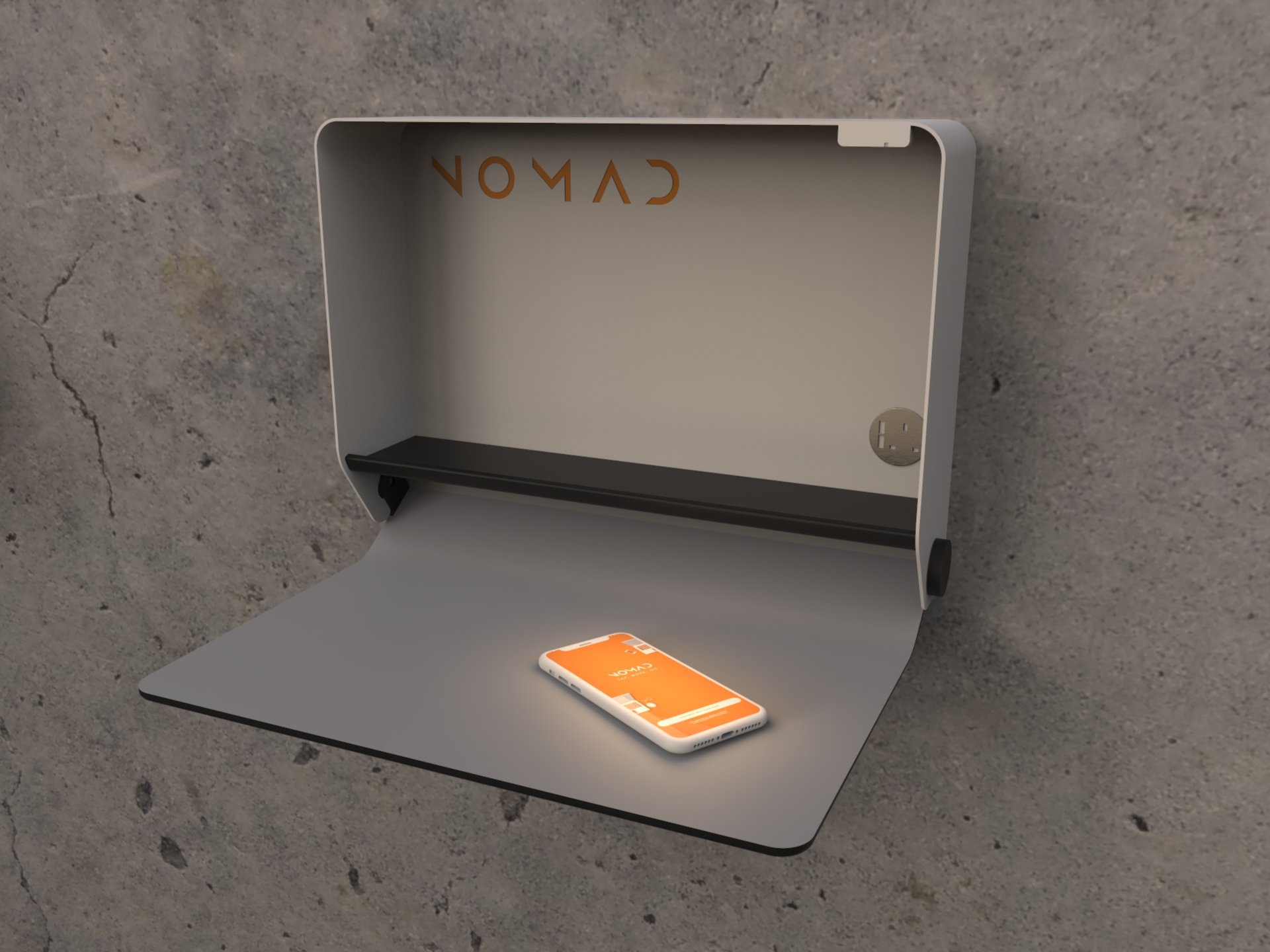
“Design solution that facilitates an ergonomic, body-conscious setting, while paying particular attention to natural, aesthetic and biophilic features with the intention of enabling the worker to feel in control of their immediate environment.ˮ
1.0 Research
Nomad;
noun:
a member of a group of people who move from one place to another rather than living in one place
User Interviews
10 professionals from various fields were recruited to take part in our in-depth interviews to better understand the needs of nomadic workers.
We aimed to gather insights on how professionals work in the context of an airport.
We wanted to know what are their working tasks and habits, and how can we help to replicate that in a complex and active environment?
Key findings:
"Confidentiality is also a huge issue in crowded public spaces when trying to work."
"Staying connected in the environment near a gate rather than being a 10-minute walk away like the business lounge."
"Siting in a business lounge and worrying about missing the important announcements."
"I feel distracted by people around me, anxious before a flight, checking bags, making sure you have everything."
"When it's just European flights we don't get access to business lounges."active environment?
2.0 Define
affinity mapping
As a team we extracted key insights from our gathered data, colour coded and sorted them into distinct categories. Using string we connected the
correlating insights to distinguish specific user stories and identify habits. The use of both an overarching story and specific habits affords us to generate ideas for each issue while keeping sight on the bigger picture.
Mision statement
"In the airport environment nomadic professionals have increasing concerns regarding confidentiality and their personal possessions. These concerns have dramatic consequences on productivity for the modern worker."
3.0 Ideate
Quick & Dirty
After some initial exploration, we quickly honed in on our chosen direction and began a rapid prototyping with the most basic materials readily available. The goal was to understand the basic function of the physical product and the most optimal solution to enhance workflow.
Movement, use of space and surrounding environment were some of the key areas of consideration when working on the initial prototyps.
UI
While developing a more refined physical prototype, we continued to expand on the entire product experience, exploring the possibility of different methods of rental. After considering single use cards, cash payment and subscriptions among others, we ultimately settled upon an application. We chose this method based on the capability of enhancing customer engagement, and simplification of the user flow in a fast-paced setting.
We began to develop a user interface varying in resolution, from sketching through to digital.
4.0 Prototype
5.0 Testing
To test our prototype, we simulated the environment in the incubator building on Maynooth Universit campus. Here, we asked professionals passing through to take part in a trial of our idea. after observing the participants, we got critical feedback through probative questioning.
What we found
1
Users found Nomad's size very generous, more than needed, which is a positive for us. We can reduce its size without affecting the experience, optimizing airport wall space allocation.
2
They valued the charging feature and would rent a Nomad at an airport just for that.
3
Users questioned whether Nomad would provide a private WiFi network due to public network security concerns, which we found noteworthy.
4
Users disliked the QR code for access, leading us to switch to NFC.
A win for the team!
We experienced some success at this point as we participated and became eventual winners of the international Orangebox & Walls2Workstation Student Design Competition.
We were excited by the opportunity to take part in a brief internship to develop the idea further and act on the insights gained at the point of testing.
Leveling up
Streamlining the service
Pivotal to the product, the service demanded considerable attention to address the concerns highlighted by the parties involved in Nomad’s progression.
Orangebox
Focused on the experience of the physical unit, specifically material choice, robustness, aesthetics and design for maintenance.
Users
Now was our chance to tackle the worries that were brought forward by the users at point of testing. Particularly in reference to the Application.
Dublin airport’s innovation lab
Queried the locations of Nomad units and wanted to ensure they did not obstruct areas where movement of people was not obstructed.
The final design
Moving away from a biophilic wooden texture towards a more contemporary metallic shell with a textured fabric outer skin. Materials such as steel and rubber were chosen for cleanability, structural robustness and fire resistance, while integrating fan hinges and a magnetic locking element improve the quality of interaction with the customers.
Size & fit
After discussions with Dublin Airport's innovation lab, concerns about the size, location, and functionality of the unit were raised. We took this as an opportunity to refine the design for better user and infrastructure compatibility. Placing the Nomad near gates addressed congestion concerns and provided a convenient, comfortable atmosphere for users to perform tasks.































